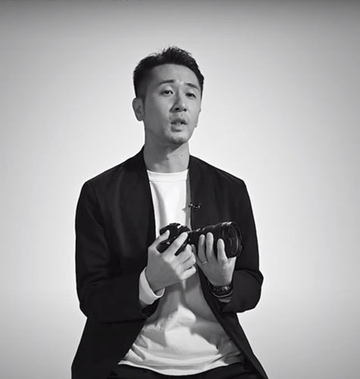Horizons broadened.

The ultimate ultra-wide zoom.
Brilliant. By design.
Say “action”.
Convenience. Built in.

See more from Z.
Technology

ARNEO Coat
An anti-reflective coating developed by Nikon and used in conjunction with Nano Crystal Coat to further reduce ghost and flare effects caused by incident light entering the lens vertically. This allows for the outstandingly clear capture of images even when a light source is located within the frame.

Stepping Motor
NIKKOR Z lenses use a stepping motor for fast, accurate, smooth, quiet autofocus with reduced wobbling. This quiet drive system makes the lenses ideal for use when shooting video.

Electromagnetic Diaphragm Mechanism
An electromagnetic diaphragm mechanism in the lens barrel provides highly accurate electronic diaphragm or aperture blade control when using auto exposure during continuous shooting.

ED (Extra-Low Dispersion) Glass
An optical glass developed by Nikon that is used with normal optical glass in telephoto lenses to obtain optimum correction of chromatic aberrations.

Nano Crystal Coat
An anti-reflective coating developed by Nikon that virtually eliminates internal lens element reflections across a wide range of wavelengths. Nano Crystal Coat solves ghost effects caused by red light and effectively reduces ghost and flare caused by light entering the lens diagonally.

Aspherical Lens
A lens with a curved, non-spherical surface. Used to reduce aberrations and enable a more compact lens size. Aspherical lenses minimize coma and other types of lens aberrations, even when used at the widest aperture. They are particularly useful in correcting distortion in wide-angle lenses and help contribute to a lighter, more compact design by reducing the number of standard (spherical) elements necessary. Aspherical lens elements correct these distortions by continuously changing the refractive index from the center of the lens.

IF Lens
A NIKKOR lens in which only the internal lens group shifts during focusing. Thus, IF NIKKORS do not change in size during AF operation, allowing for compact, lightweight lenses capable of closer focusing distances. These lenses will be designated with the abbreviation IF on the lens barrel.

Super Integrated Coating
Nikon Super Integrated Coating is Nikon's term for its multilayer coating of the optical elements in NIKKOR lenses.
LCD, Video and Photo Gallery images are for illustrative purposes only
Tech Specs
Focal Length Range
14 -24mmMaximum Aperture
f/2.8Format
FXNano Crystal Coat
YesApprox. Dimensions (Diameter x Length)
3.5 in.88.5 mmx5 in.124.5 mmApprox. Weight
23 oz.650 g
- Mount TypeNikon Z Mount
- Focal Length Range14 -24mm
- Zoom Ratio1.7x
- Maximum Aperturef/2.8
- Minimum Aperturef/22
- FormatFX
- Maximum Angle of View (DX-format)90°
- Minimum Angle of View (DX-format)61°
- Maximum Angle of View (FX-format)114°
- Minimum Angle of View (FX-format)84°
- Maximum Reproduction Ratio0.13x
- Lens Elements16
- Lens Groups11
- Compatible Format(s)FX, DX
- Diaphragm Blades9
- Distance InformationYes
- Arneo CoatYes
- Nano Crystal CoatYes
- ED Glass Elements4
- Fluorine CoatYes
- Aspherical Elements3
- Super Integrated CoatingYes
- AutofocusYes
- Internal FocusingYes
- Minimum Focus Distance0.92 ft. (0.28m) from focal plane at all zoom positions
- Focus ModeAutofocus, Manual
- Filter Size112mm
- Accepts Filter TypeFront: screw-in, Rear: slot for gel filters
- Approx. Dimensions (Diameter x Length)3.5 in.88.5 mmx5 in.124.5 mm
- Approx. Weight23 oz.650 g
- Lens TypeZoom
Product Forum
Support
Product Registration
Registering your Nikon product allows us to send you (with your permission) important updates, service information and helpful hints, and it makes it easier should you ever need to call in for help.
Register your product online now.Nikon Answers Site
We store all resolved problems in our solution database. If you can’t find a relevant answer, feel free to submit a question to our technical support team.
View Questions & Answers

